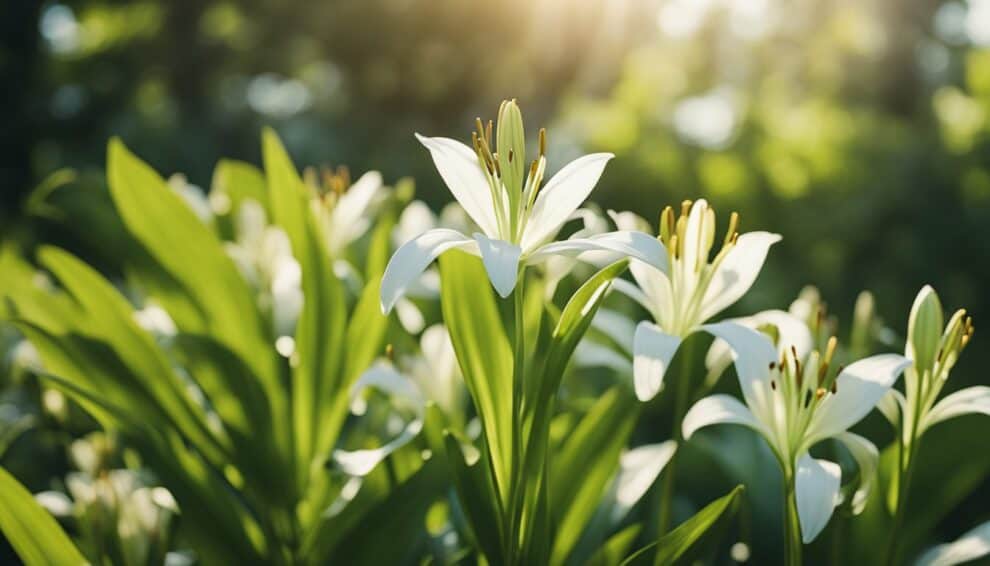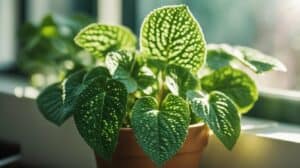Agapanthus Africanus, commonly known as the African Lily, is a stunning flowering plant that can add a touch of elegance to any garden.
Native to South Africa, this plant is a popular choice for gardeners all over the world due to its beautiful blue or white flowers and its ability to thrive in a variety of growing conditions.

Growing Agapanthus Africanus successfully requires a little bit of knowledge and preparation.
This article will provide tips and tricks for cultivating this plant, including the best soil conditions, watering techniques, and sunlight requirements.
Whether you are a seasoned gardener or a beginner, this guide will help you achieve a flourishing Agapanthus Africanus plant that will be the envy of your neighborhood.
Understanding Agapanthus Africanus
Agapanthus Africanus, also known as the African Lily, is a popular flowering plant native to South Africa.
It is a member of the Agapanthus genus, which includes around 10 species of evergreen perennials that produce showy, trumpet-shaped flowers.
Agapanthus Africanus is characterized by its long, strap-like leaves that form a clump of foliage at the base of the plant.
The plant produces tall stems that can reach up to 1m in height, topped with clusters of blue, white, or purple flowers in summer.
One of the key features of Agapanthus Africanus is its adaptability to a wide range of growing conditions.
It can thrive in both full sun and partial shade, and is tolerant of a variety of soil types, although it prefers well-draining soil.
It is also a relatively low-maintenance plant, requiring only occasional watering and fertilization.
Agapanthus Africanus is a popular choice for gardeners looking to add color and interest to their outdoor spaces.
It can be grown in garden beds, borders, or containers, and is often used as a focal point or accent plant.
Additionally, it is a great choice for cut flowers, with its long-lasting blooms making it a favorite of florists.
In summary, Agapanthus Africanus is a versatile and attractive plant that can add beauty and interest to any garden.
Its adaptability and low-maintenance requirements make it a great choice for gardeners of all skill levels.
Planting Guidelines

Choosing the Right Location
When planting Agapanthus Africanus, it is important to choose the right location.
The plant thrives in full sun, so select an area that receives at least six hours of sunlight each day.
Additionally, the location should have well-draining soil to prevent waterlogging.
Agapanthus Africanus can grow in a range of soil types, but the ideal soil pH is between 6.0 and 7.5.
Soil Preparation
Before planting, prepare the soil by digging a hole that is twice as wide and deep as the plant’s root ball.
Mix in organic matter, such as compost or aged manure, to improve soil fertility and drainage.
If the soil is heavy, add sand or perlite to improve drainage.
Planting Procedure
To plant Agapanthus Africanus, remove the plant from its container and loosen any tangled roots.
Place the plant in the hole, making sure that the top of the root ball is level with the soil surface.
Backfill the hole with soil, gently tamping it down as you go. Water the plant thoroughly to settle the soil around the roots.
Apply a layer of mulch around the plant to retain moisture and suppress weed growth.
By following these planting guidelines, you can ensure that your Agapanthus Africanus will thrive and produce beautiful blooms.
Care and Maintenance

Watering Requirements
Agapanthus Africanus plants require moderate watering.
They need to be watered regularly, especially during the growing season, which is from spring to summer.
During this period, the soil should be kept moist but not waterlogged.
Overwatering can lead to root rot and fungal diseases, so it’s important to ensure that the soil is well-draining.
In winter, the plant should be watered less frequently, as it goes into a dormant phase.
Fertilizing and Feeding
Agapanthus Africanus plants require regular feeding to ensure healthy growth and abundant blooms.
A balanced fertilizer with equal amounts of nitrogen, phosphorus, and potassium should be applied every two to three weeks during the growing season.
Be sure to follow the manufacturer’s instructions for application rates.
In addition, a slow-release fertilizer can be applied in early spring to provide nutrients throughout the growing season.
Pruning and Deadheading
Agapanthus Africanus plants require minimal pruning. Deadheading, or removing spent flowers, is important to encourage the plant to produce more blooms.
This should be done regularly during the growing season. In addition, any dead or damaged leaves should be removed to maintain the plant’s appearance.
Pruning should be done in early spring before new growth appears.
Any dead or damaged stems should be removed, and the plant can be trimmed to maintain its shape.
Remember to take good care of your Agapanthus Africanus plant, and it will reward you with beautiful blooms year after year.
Common Challenges

Growing Agapanthus Africanus can be a rewarding experience, but it’s not without its challenges.
Here are some common issues that gardeners may face when growing this beautiful plant.
Pest Management
Agapanthus Africanus can be susceptible to a variety of pests, including aphids, thrips, and spider mites.
Regular inspection of the plant can help identify any infestations early on. To control pests, gardeners can use insecticidal soaps or neem oil.
Additionally, introducing natural predators like ladybugs or lacewings can help keep pest populations in check.
Disease Control
Agapanthus Africanus is generally a hardy plant, but it can be vulnerable to certain diseases.
Root rot can occur if the soil is kept too wet, so it’s important to ensure that the soil has good drainage.
Leaf spot and powdery mildew can also be problematic, but can be controlled with fungicides.
Regularly removing dead or diseased plant material can also help prevent the spread of disease.
Weather Considerations
Agapanthus Africanus prefers warm, sunny weather, but can be sensitive to extreme heat and cold.
In hot weather, the plant may need extra water to prevent the soil from drying out.
In colder climates, the plant should be protected from frost and brought indoors during the winter months.
Additionally, strong winds can damage the plant, so it’s important to provide support if necessary.
By being aware of these common challenges and taking steps to address them, gardeners can successfully grow Agapanthus Africanus and enjoy its beautiful blooms for years to come.
Frequently Asked Questions

What are the ideal conditions for planting Agapanthus Africanus?
Agapanthus Africanus grows best in well-draining soil with full sun exposure.
It prefers a warm and dry climate, but it can tolerate some shade and cooler temperatures. The soil should be moist but not waterlogged.
How often should I water African lilies for optimal growth?
Watering frequency depends on the climate and soil conditions.
In general, Agapanthus Africanus should be watered deeply once a week during the growing season. During hot and dry spells, it may need more frequent watering.
However, it is important not to overwater the plant, as this can lead to root rot.
Are Agapanthus perennials, and will they return after winter?
Yes, Agapanthus Africanus is a perennial plant that can survive winter and return in the spring.
However, it may need some protection in colder climates, such as mulching or covering with a frost blanket.
What is the typical lifespan of an Agapanthus plant?
Agapanthus Africanus can live for several years, with some plants surviving for up to 10 years or more.
However, the lifespan can vary depending on growing conditions and care.
How can I encourage my Agapanthus to bloom more prolifically?
To encourage more blooms, Agapanthus Africanus should be fertilized regularly with a balanced fertilizer during the growing season.
Deadheading spent flowers can also promote more blooms.
Additionally, providing optimal growing conditions such as full sun exposure and well-draining soil can help the plant produce more flowers.
Can Agapanthus plants be divided, and if so, how should it be done?
Yes, Agapanthus Africanus can be divided to propagate new plants. This is best done in the spring or fall when the plant is not actively growing.
The plant should be dug up and the root ball separated into smaller sections, each with a few leaves and roots.
The new sections can then be planted in well-draining soil and watered regularly until established.














